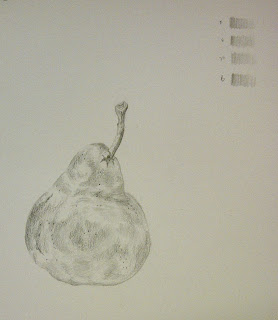Echinacea purpurea cross-section
(c) Sarah Morrish 2013
I think the majority of botanical artists have a love of detail. That detail does not always stem from a scientific background, but just from pure fascination and the passion to want to portray that detail accurately in a beautiful work of art.
How that detail is rendered in an art piece is of course dependant on the medium used. Botanical Illustrators have traditionally used pen and ink for pure scientific illustrations, as well as watercolour.
In 2009 Niki Simpson had an exhibition entitled 'Digital Diversity - A New Approach to Botanical Illustration'. Although I didn't visit the exhibition I have seen the associated publication, and was fascinated by her approach. The illustrations themselves are digitally created, but also beautiful in their composition. All of the illustrations on her website have been produced in collaboration with Peter Barnes. To see more of her work go to:
http://www.nikisimpson.co.uk/index.html
Another artist from the present day whose work I admire is Carolyn Jenkins. Her illustrations often include cross-sections of flowers and parts of plants, but her work is presented in a fresh contemporary way. Also, her paintings are not always particularly large, so it shows that size does not always matter. To see more of her illustrations go to:
http://www.carolynjenkins.co.uk/www.carolynjenkins.co.uk/Paintings.html
(c) copyright Carolyn Jenkins
I have always been fascinated by the morphology of plants, and as a young girl I used to enjoy taking flowers apart looking at their different parts. This interest has been throughout my life, although at times has waned a little due to other artistic distractions.
When I was introduced to botanical art formally by the Botanical Illustrator Gretel Dalby-Quenet, one of the first historical illustrator's she introduced me to (not literally, but his work !) was Arthur Harry Church (1865 - 1937). To this day I could spend hours just looking at the book about his work.
Published by Merrell and The Natural History Museum
Many of his works are composed of cross-sections of flowers and are beautiful in their own right.
Below is an image of his Foxglove Digitalis purpurea illustration.
Dianne Sutherland SBA, a fellow Botanical Artist, has written an essay on the work of Arthur Harry Church. This formed part of her work for the Society of Botanical Artists Diploma Course.
The full essay can be found on Dianne's website, along with her stunning illustration on vellum of Digitalis purpurea.
For those of you that may be interested in plant morphology and scientific illustration, the Institute for Analytical Plant Illustration produces some great resources to support your illustration work, as well as providing workshops and meetings to members.
So in conclusion, will my work take a new direction, is a new project in the pipeline ?? Watch this space !!

.jpg)







































.jpg)










